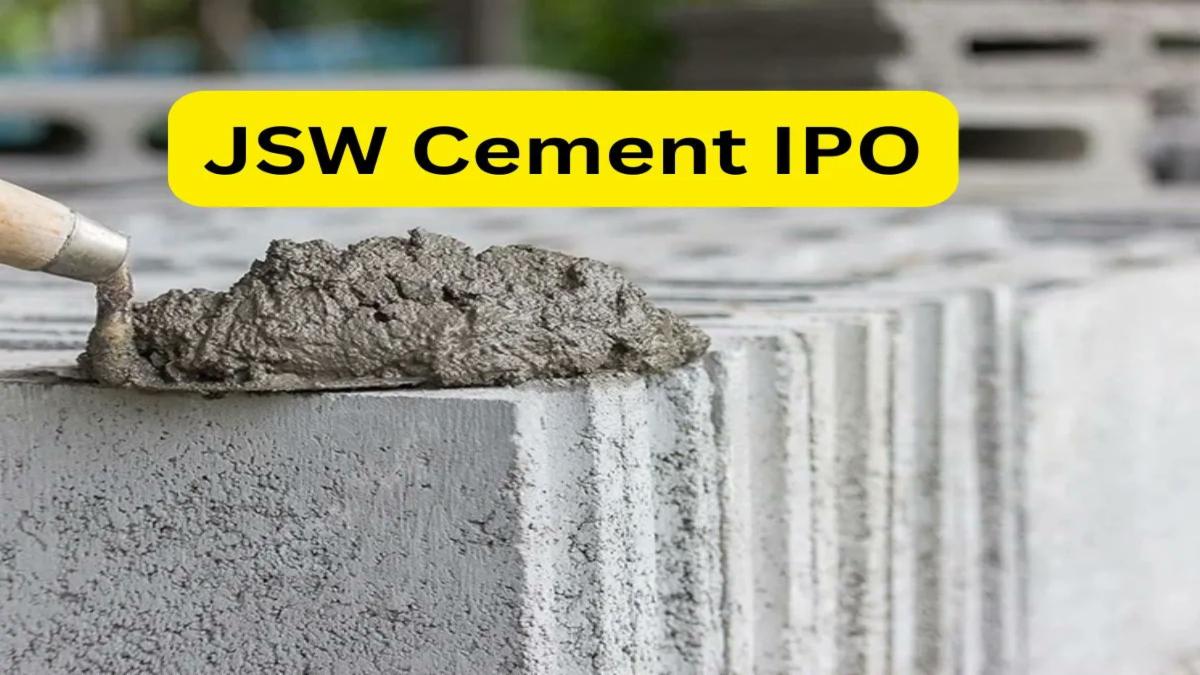Article Body
Unpacking the Numbers Behind JSW Cement's IPO Success
As JSW Cement's ₹3,600 crore IPO allotment kicks off today, August 12, 2025, the figures tell a compelling story of a company on the ascent in India's dynamic cement landscape. From subscription metrics to historical growth patterns, this deep dive explores the data driving the buzz, offering a clear lens on where JSW stands amid broader industry shifts.
Founded in 2006 as part of the diversified JSW Group, the company has evolved from a regional player to a national contender, emphasizing green cement innovations. Its journey mirrors India's cement boom, fueled by urbanization and infrastructure spending.
Subscription Data: A Closer Look at Investor Appetite
The IPO, open from August 7-11, garnered bids for 14.09 crore shares against 1.81 crore offered, achieving 7.77 times overall subscription. Here's a breakdown:
| Category | Subscription Multiple | Shares Bid For | Shares Offered |
|---|---|---|---|
| QIB | 15.80x | High demand from funds | 50% quota |
| NII | 10.97x | Strong HNI interest | 15% quota |
| Retail | 1.81x | Modest participation | 35% quota |
This contrasts with the initial day's slow start at 0.37 times, building momentum as QIBs piled in. Anchor bookings of ₹1,080 crore pre-IPO set the stage.
Grey market premium (GMP) trends show volatility: Starting at ₹19 pre-open, it fell to ₹5 by close, indicating a potential 3.4% listing pop.
historical growth: From Startup to Scale-Up
JSW Cement's capacity expansion is a standout metric. Installed grinding capacity grew from 6 MMTPA in 2015 to 20.60 MMTPA by March 2025, a CAGR of 14.14%—outpacing the industry's 6.23%. Sales volume surged at 19.06% CAGR over the same period.
Timeline of Key Milestones:
- 2009: First plant in Vijayanagar, Karnataka (0.7 MMTPA).
- 2015: Expansion to 6 MMTPA across South India.
- 2020: Entered East and West markets, reaching 14 MMTPA.
- 2025: Current 20.60 MMTPA; plans for 41.85 MMTPA by 2027, including Nagaur unit.
Clinker capacity stands at 6.44 MMTPA, with limestone reserves of 1,098.88 million tonnes ensuring long-term supply.
Financial Trends (FY23-FY25):
| Year | Revenue (₹ cr) | EBITDA (₹ cr) | PAT (₹ cr) | Debt (₹ cr) |
|---|---|---|---|---|
| FY23 | 5,982 | 1,200 | 104 | 5,500 |
| FY24 | 6,114 | 1,100 | 62 | 6,000 |
| FY25 | 5,915 | 879 | -164 | 6,167 |
The FY25 loss stems from capex and fuel costs, but adjusted PAT shows resilience at -₹13 crore.
Industry Comparisons: Where JSW Fits In
India's cement industry, valued at ~₹3 lakh crore, produces 668 MMTPA, second only to China. Demand growth: 6-7% annually to 2030. JSW ranks among top 10 by capacity but trails leaders.
Peer Metrics (FY25):
| Company | Capacity (MMTPA) | Revenue (₹ cr) | PAT Margin (%) | Debt/EBITDA (x) |
|---|---|---|---|---|
| UltraTech | 138 | 70,908 | 7.87 | 1.33 |
| Ambuja | 78 | 33,160 | 13.68 | 0.10 |
| JSW | 20.6 | 5,915 | -2.77 | 4.86 |
| JK Cement | 22 | 11,556 | 6.90 | 2.50 |
JSW's faster growth (15.05% sales CAGR FY23-25 vs. industry 8.12%) and lowest CO2 emissions (52% below peers) highlight its edge in sustainability. However, higher debt ratios signal risks.
Sector Patterns: Cyclical Yet Promising
Historical data shows cement IPOs like India Cements (1990) and recent ones (e.g., Sagar Cements) often list with premiums during booms. Post-COVID, capacity utilization hit 70-75%, with prices up 5% in 2025. Green cement like GGBS, where JSW leads with 84% share, grows at 14-15% CAGR.
For historical context on India's cement evolution, check Wikipedia.
In wrapping up, JSW Cement's stats reveal a high-growth story tempered by financial pressures. As listing approaches on August 14, these numbers will shape investor strategies in a sector poised for infrastructure-driven gains.


Comments